
NEWSLETTER
Fibre Optic Strain Sensor Project
Cranfield University and AEA Technology plc
Andrew Temple, AEA Technology plc

|
NEWSLETTERFibre Optic Strain Sensor Project |
On line strain measurement is a fundamental part of structural integrity monitoring. A three year project between Cranfield University and AEA Technology developed and tested a fibre optic sensor to measure strain in composite panels bonded to an old bridge as stiffeners.
Advantages of Fibre Bragg Gratings
Fibre Bragg gratings have the following advantages:
The Principles of operation
The refractive index of the core of a fibre optic cable can be altered by illuminating the cable with UV light. A Bragg grating can thus be written on to the core using suitably modulated UV light. Under quiescent conditions the grating gives a reflection at a particular wavelength. A local strain in the region of the grating shifts the wavelength of the reflected signal by 1pm per micro strain. Local temperature changes in the region of the grating change the wavelength of the reflection by 10pm per °C.
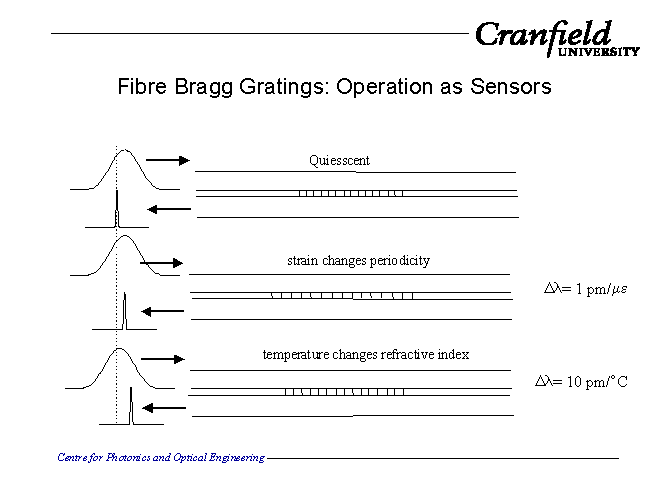
It is possible to write a number of fibre Bragg gratings into a single length of fibre. Each then measures its local temperature and strain and can be distinguished by fabricating each sensor with a seaparate centre frequency. Typical sensitivities are:
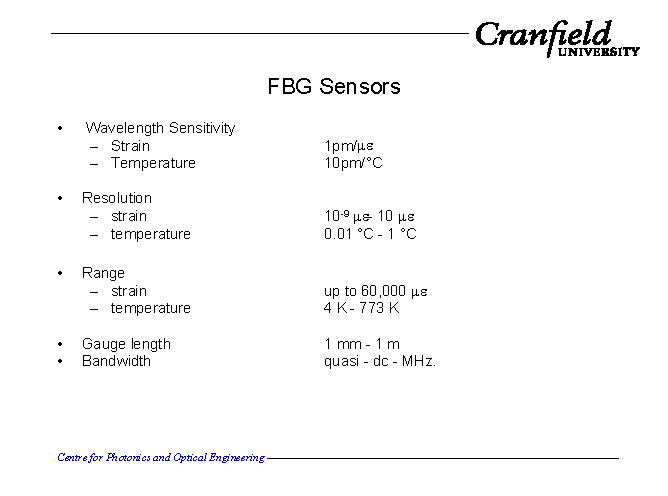
The monitors were used to measure strain in composite stiffener panels mounted on Acton Town underground railway bridge. Five wavelength division multiplexed arrays, each with nine fibre Bragg sensors were used.
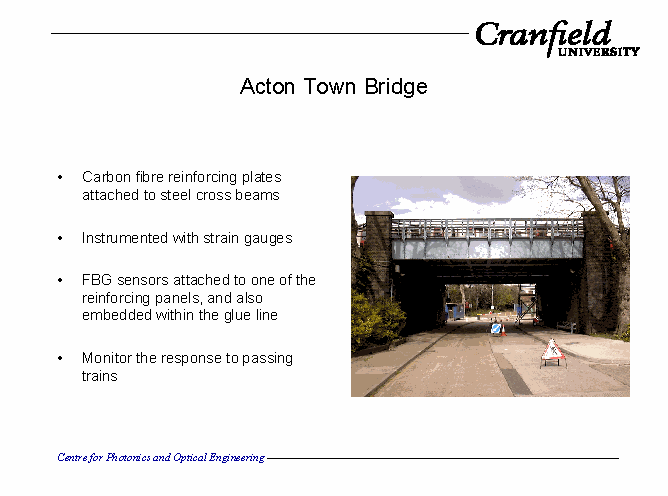
Typical results when a train passes are shown below.
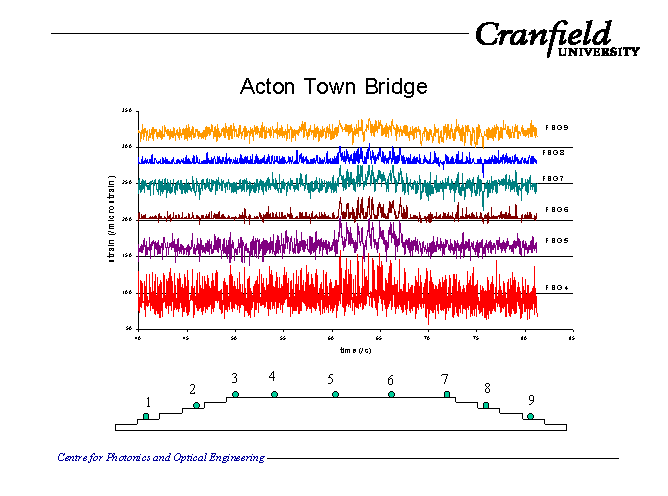
The sensor has also been used on pressure vessels. Between 10 and 20 local strain sensor points can be put on to a fibre so two fibres can give up to 40 measurement points. Fibres can be wound to follow almost any desired path around a component.
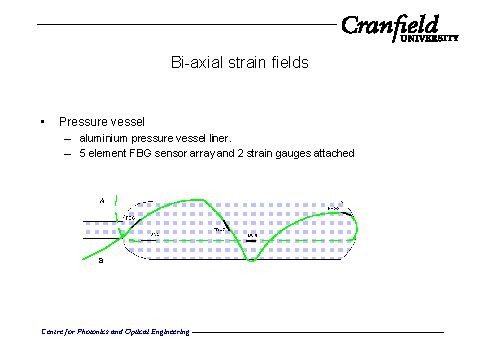
Results from both these tests suggest that this will be a valuable, easily transportable, monitoring technique.
For further details contact: s.w.james@cranfield.ac.uk or richard.lee@aeat.co.uk
Other links: a European Fourth Framework (FP4) programme of four years duration was successfully completed in December 1999 for establishing the use of such fibre Bragg gratings on fossil fuel plants operating at 550°C. Click here: fos-en.net/related/cordis/sch47.htm
Prepared by Andrew Temple, AEA Technology plc.(andrew.temple@aeat.co.uk)